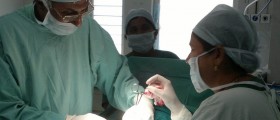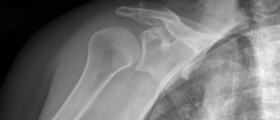
Groin pulls appear when the fibers in the adductor muscle are partly torn, and we can feel this pain especially when we try to pull the legs together while we are bending. The inguinal ligament is connected to the pubic bone and stretches downwards, making lacunar ligament. Furthermore, the lacunar ligament joins the pectineal ligament. When any of these ligaments are tensed, the pulled groin ligament occurs.
When we use our adductor muscles and the ligaments in the groin region, we can make a tiny tear, which can develop into a complete rupture if we make abrupt rough movements. Pulled groin ligament usually occurs when we do some strenuous physical activities without previous warm-up.
Symptoms of pulled groin ligament
There are three grades of the groin pull, and the symptoms of this condition occur according to the severity of the pulled groin ligament.
When one has pulled groin ligament of first grade, the most common symptoms are slight swelling, pain in the restricted area, and tenderness in the groin region. Some might experience slight difficulty when walking. The second degree of pulled groin ligament, which includes tissue damage, is manifested through the sharp pain in the groins when doing any physical activity. Unbearable severe pain in the groins, significant swelling, and incapacity to contract muscles are the symptoms of the third grade groin pull. Furthermore, the person may even face the loss the strength to make any movements.Treatment of pulled groin ligament
As we have already seen, the injuries and excessive use of the muscles and ligaments in the groin area are responsible for the occurrence of this condition. However, in order to cure it, it is then necessary to rest the affected area. Otherwise, if we continue to overuse the muscles and ligaments, as well as tendons, we risk causing a complete rupture.
Many doctors usually recommend a physical therapy in order to make the ligaments and tendons in the groin area stronger and flexible. This physical therapy includes only mild stretching exercises since the strenuous activities should be avoided.
- www.nhs.uk/conditions/sprains-and-strains/
- medlineplus.gov/ency/patientinstructions/000682.htm
- Photo courtesy of Mikael Hu00e4ggstru00f6m by Wikimedia Commons: commons.wikimedia.org/wiki/File:Inguinal_triangle,_external_view.png

















Your thoughts on this
Loading...